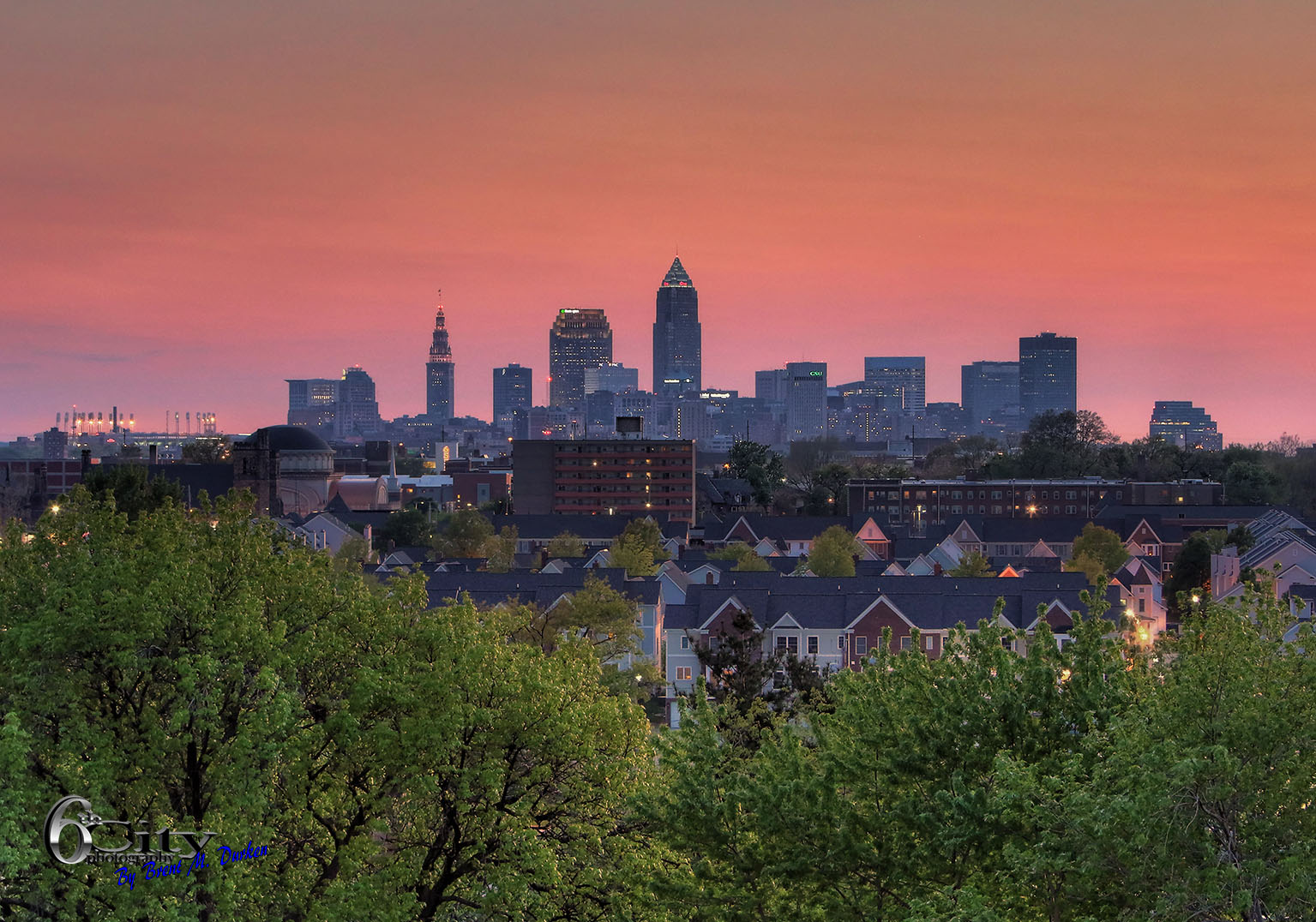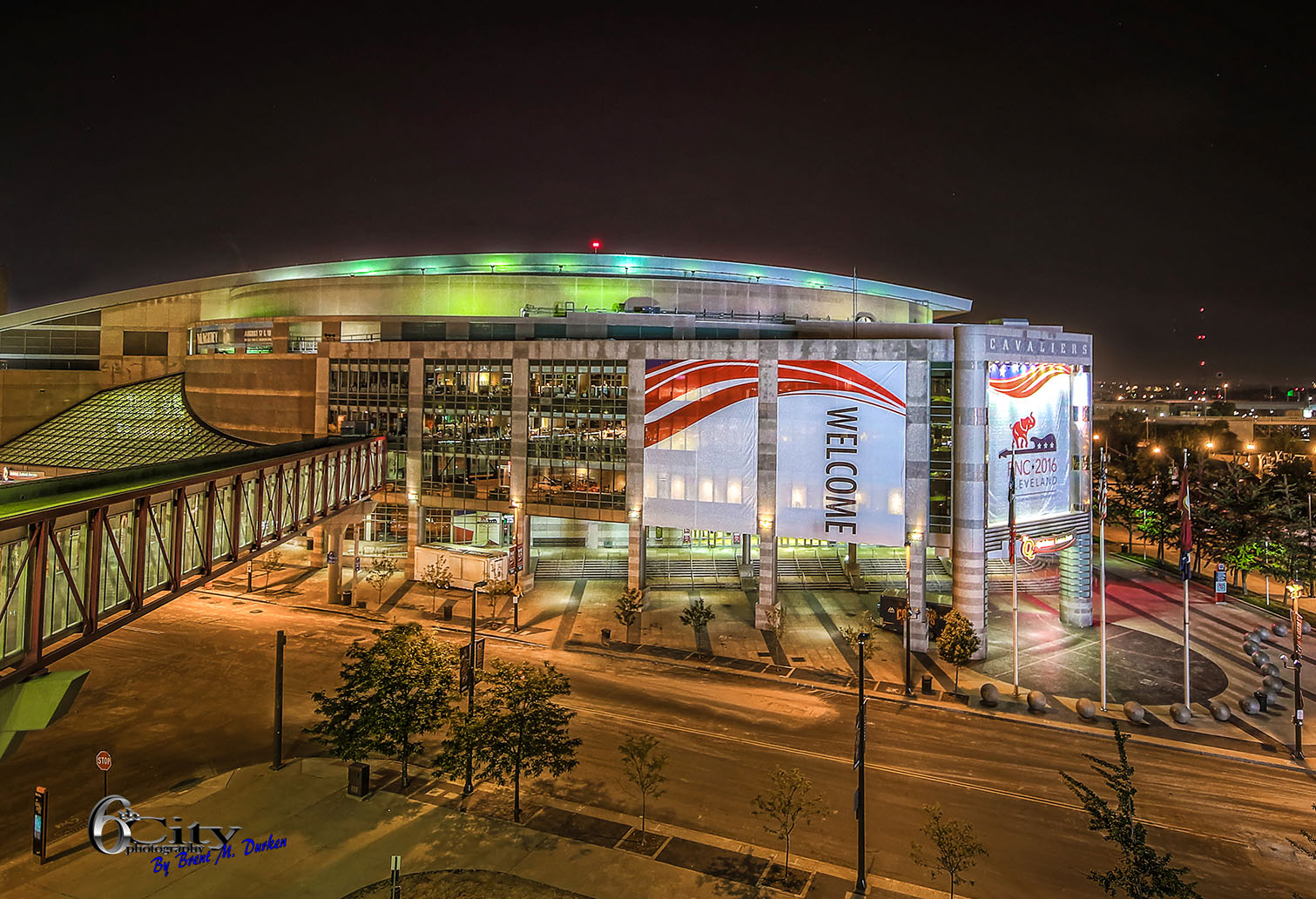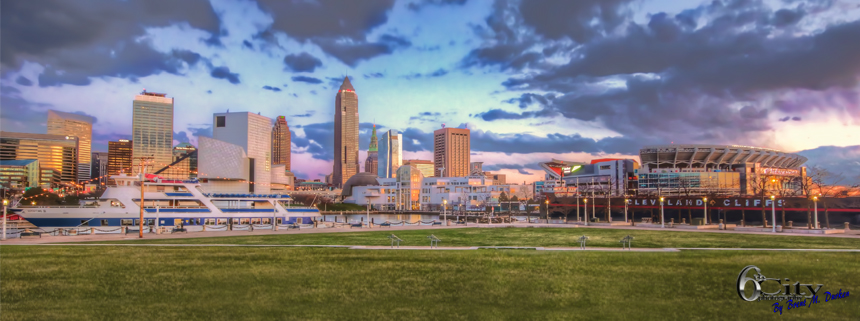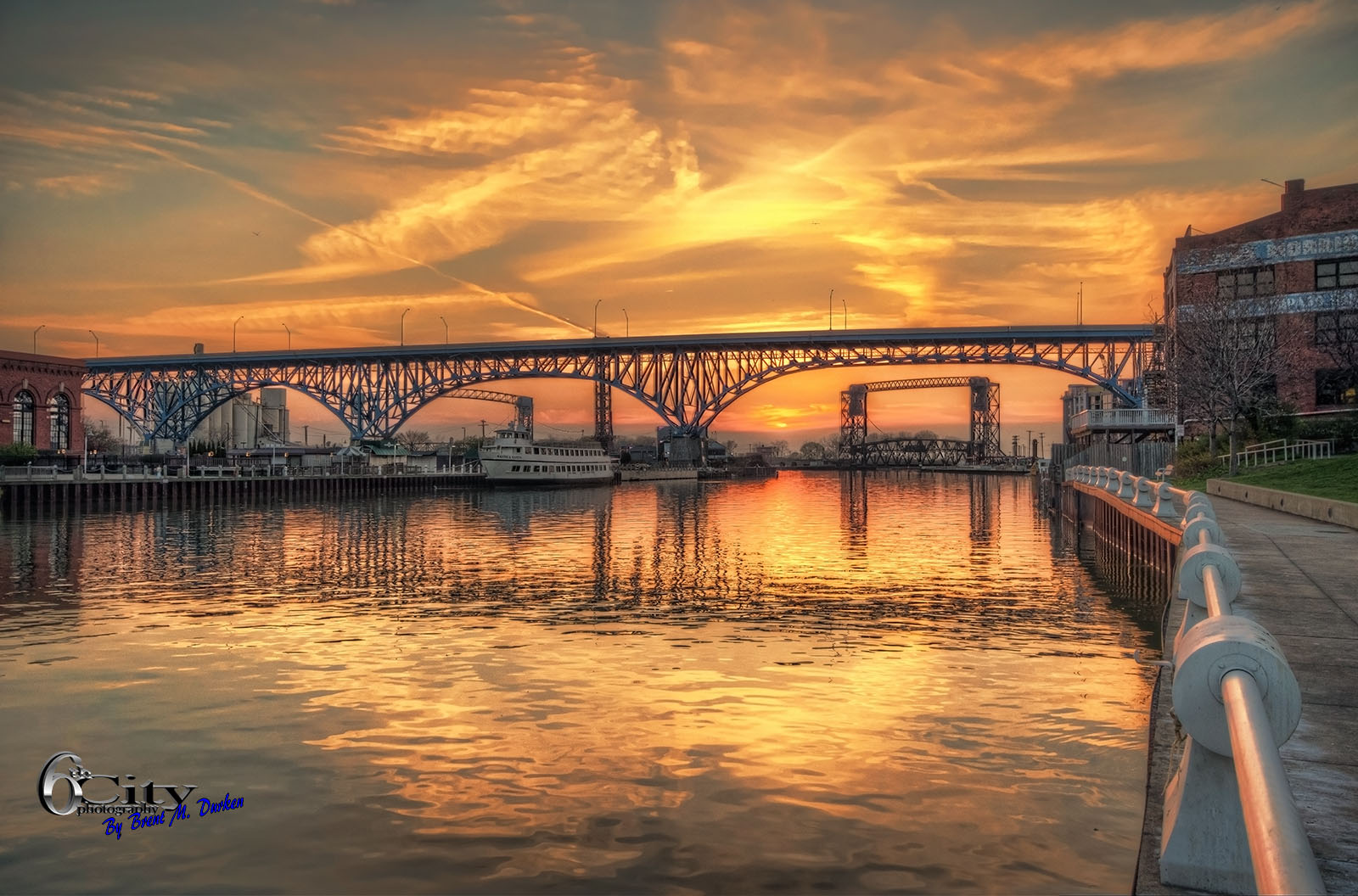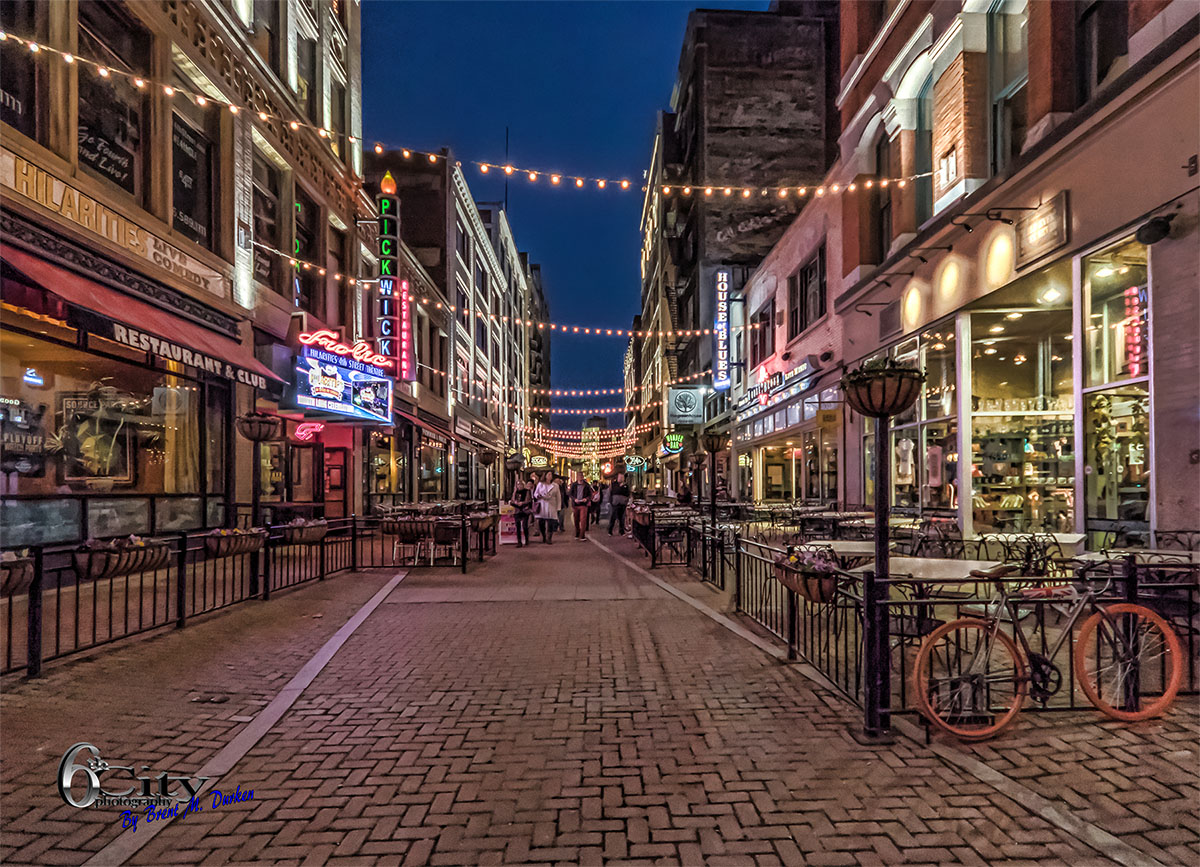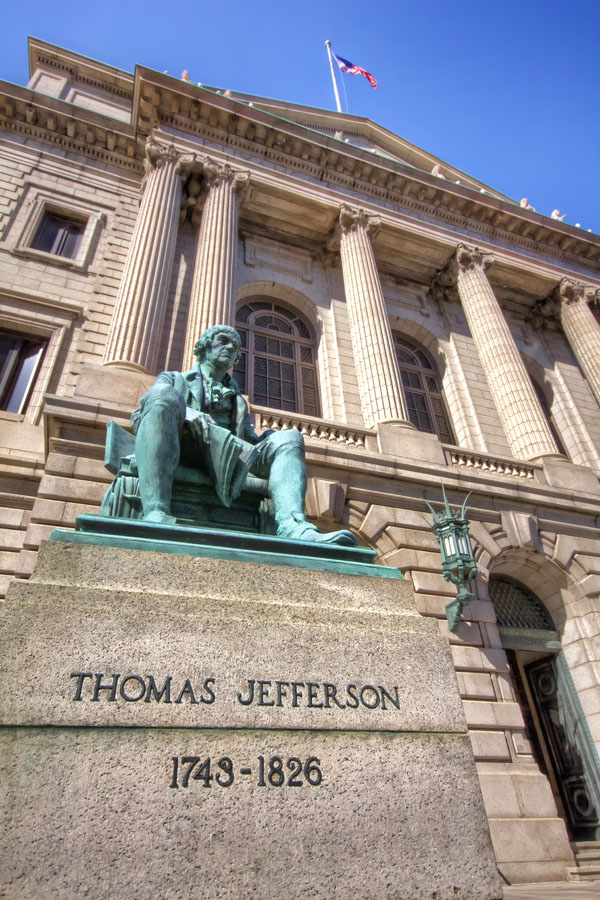Republican National Convention
The Cavs banners have come down and Quicken Loans Arena is getting ready to serve as the main convention area for the Republican National Convention.
The 2016 Republican National Convention will be held July 18–21, 2016 in Cleveland, Ohio. At the convention delegates Republican Party will choose the party’s nominees for President and Vice President of the United States in the 2016 national election.
All photos are copyright of Brent Durken – www.brentdurken.com
To purchase a digital download of this photo for your website or blog please visit: https://www.smugmug.com/gallery/n-zRG6xB/
Purchase a print of this photo: Brent Durken Print Sales
Panoramic Cleveland Skyline
Panoramic view of the Cleveland Skyline from Voinovich Bicentennial Park in the North Coast Harbor.
All photos are copyright of Brent Durken – www.brentdurken.com
To purchase a digital download of this photo for your website or blog please visit: https://www.smugmug.com/gallery/n-zRG6xB/
Purchase a print of this photo: Brent Durken Print Sales
Sunset on the Cuyahoga River
Info on the Cuyahoga River from Wikipedia: “The Cuyahoga River is famous for being “the river that caught fire,” helping to spur the environmental movement in the late 1960s. The name “Cuyahoga” is believed to mean “crooked river” from the Mohawk Indian name “Cayagaga,” although the Senecas called it “Cuyohaga,” or “place of the jawbone.” At least 13 fires have been reported on the Cuyahoga River, the first occurring in 1868. The largest river fire in 1952 caused over $1 million in damage to boats, a bridge, and a riverfront office building. On June 22, 1969, a river fire captured the attention of Time magazine, which described the Cuyahoga as the river that “oozes rather than flows”.
The 1969 Cuyahoga River fire helped spur an avalanche of water pollution control activities, resulting in the Clean Water Act, Great Lakes Water Quality Agreement, and the creation of the federal Environmental Protection Agency and the Ohio Environmental Protection Agency (OEPA). As a result, large point sources of pollution on the Cuyahoga have received significant attention from the OEPA in recent decades. These events are referred to in Randy Newman’s 1972 song “Burn On,” R.E.M.’s 1986 song “Cuyahoga,” and Adam Again’s 1992 song “River on Fire.” Great Lakes Brewing Company of Cleveland named its Burning River Pale Ale after the event. Water quality has greatly improved and, partially in recognition of this improvement, the Cuyahoga was designated one of 14 American Heritage Rivers in 1998″.
More info:https://en.wikipedia.org/wiki/Cuyahoga_River
All photos are copyright of Brent Durken – www.brentdurken.com
To purchase a digital download of this photo for your website or blog please visit: https://www.smugmug.com/gallery/n-zRG6xB/
Purchase a print of this photo: Brent Durken Print Sales
http://brent-durken.pixels.com/
Rock and Roll Hall of Fame in Cleveland
 The Rock and Roll hall of Fame has become one of Cleveland’s most recognizable landmarks and a must see for out of town visitors. Here is a little information about the history of the Rock hall from the official website:
The Rock and Roll hall of Fame has become one of Cleveland’s most recognizable landmarks and a must see for out of town visitors. Here is a little information about the history of the Rock hall from the official website:
More than 25 years ago, leaders in the music industry joined together to establish the Rock and Roll Hall of Fame Foundation in New York City to celebrate the music and musicians that changed the world. With that, one of the Foundation’s many functions is to recognize the contributions of those who have had a significant impact on the evolution, development and perpetuation of rock and roll by inducting them into the Hall of Fame.
The Rock and Roll Hall of Fame and Museum opened its doors in 1995 on the shores of Lake Erie in downtown Cleveland, Ohio. The Rock and Roll Hall of Fame and Museum, Inc. is a nonprofit organization that exists to engage, teach and inspire through the power of rock and roll. It carries out this mission through its operation of a world-class museum that collects, preserves, exhibits and interprets this art form and through its library and archives as well as its educational programs.
Officials from Cleveland and the state of Ohio approached the Foundation in 1985 and suggested the construction of a major museum. “We originally planned to purchase a brownstone in New York City in which to house the Hall of Fame, as well as an archive, library and museum,” said Suzan Evans. In November, the city sent a delegation to New York.
“They had these wonderful diagrams for a museum that would be much larger than any town house we had originally thought of,” said Evans. “Our eyebrows were raised, and somebody at the meeting actually passed me a note that said, ‘Pack your bags.’”
As the Foundation considered the offer, several other cities, including New York, Philadelphia, New Orleans, San Francisco, Memphis and Chicago, also made offers. The board members visited each city and were greeted with police escorts, public rallies and marching bands.
The first induction dinner was held at New York’s Waldorf-Astoria Hotel in January 1986. Inductees include Chuck Berry, James Brown, Ray Charles, Sam Cooke, Fats Domino, the Everly Brothers, Buddy Holly, Jerry Lee Lewis, Elvis Presley and Little Richard. Robert Johnson, Jimmie Rodgers and Jimmy Yancey were honored as early influences. The first non-performers honored were producer Sam Phillips and disc jockey Alan Freed. Talent scout/producer John Hammond was recognized with a Lifetime Achievement award.
Meanwhile, Cleveland ranked first in a public poll conducted by USA Today asking where the Hall of Fame should be located. After much competition and many visits to potential sites by Foundation members, Cleveland is chosen as the permanent home for the Rock and Roll Hall of Fame and Museum in May of 1986.
Following an extensive search throughout 1987, world-renowned architect I.M. Pei was chosen to design the Museum. Pei had a lot of learning to do. “I didn’t know a thing about rock and roll,” he confessed.
Not to be discouraged the board members took Pei on trips to Memphis and New Orleans and to concerts in New York. “We heard a lot of music, and I finally got it: rock and roll is about energy,” said Pei. He accepted the challenge of designing the world’s first museum dedicated to rock and roll.
On June 7, 1993, ground was broken for the Museum in Cleveland. On hand were I.M. Pei and various board members, including Ahmet Ertegun, Suzan Evans and Jann Wenner. Inductees and other artists present at the ceremony included Pete Townshend, Chuck Berry, Billy Joel, Sam Phillips, Ruth Brown, Sam Moore of Sam and Dave, Carl Gardner of the Coasters and Dave Pirner of Soul Asylum.
Townshend made one of the museum’s significant donations on this occasion – the Gibson J-200 guitar used to compose Tommy, including the classic “Pinball Wizard.”
A year later, under a hot summer sun and Ruby, a larger-than-life inflatable from the Rolling Stones’ Steel Wheels tour, the Museum was topped off with the last steel beam in its structure. First-year inductee Jerry Lee Lewis, as well as several Cleveland musicians, performed for a crowd that includes Pei, Wenner, Evans and Ertegun.
On October 13, 1994, Yoko Ono presented a major collection of John Lennon artifacts to the Museum. The collection included lyrics, Lennon’s guitar from the 1965 Beatles concert at Shea Stadium, a pair of eyeglasses and the leather jacket Lennon wore while in Hamburg.
In September of 1995 and after 12 years in the making, the Rock and Roll Hall of Fame and Museum opened with a full schedule of events.
On the first day, September 1, the celebration began with a playful parade through the streets of Cleveland, followed by a ribbon-cutting ceremony in front of the Museum. Present for the ceremony were Pei, Ertegun, Wenner, Evans, Ohio Governor George Voinovich, Cleveland Mayor Michael White, Little Richard and Yoko Ono, as well as press from around the world. A gala private dinner attended by board members, celebrities and many Cleveland residents ended the evening in grand style.
The Museum officially opened to the public on Saturday, September 2, which kicked off with a ceremony presenting the Ahmet M. Ertegun Exhibition Hall, the Museum’s main exhibit space named in recognition of the founder of the Rock and Roll Hall of Fame.
The evening culminated with a benefit concert at Cleveland Municipal Stadium. An incredible roster of the rock and roll greats performed– Chuck Berry, Bob Dylan, Al Green, Jerry Lee Lewis, Aretha Franklin, Johnny Cash, the Pretenders, John Fogerty, Lou Reed, Iggy Pop, George Clinton, the Kinks, John Mellencamp, Bruce Springsteen, Booker T. and the MGs, Eric Burdon and Martha Reeves.
Since the Museum’s opening, the Rock and Roll Hall of Fame and Museum has welcomed nearly eight million visitors from around the world and reaches more than 50,000 students and educators each year through its education programs on site and at great distances.
– Take a moment to find out more about this cool museum: http://www.rockhall.com/
All photos are copyright of Brent Durken – www.brentdurken.com
To purchase a digital download of this photo for your website or blog please visit: https://www.smugmug.com/gallery/n-zRG6xB/
Purchase a print of this photo: Brent Durken Print Sales
East 4th Street
East 4th Street is a major downtown neighborhood in Cleveland, Ohio, known for its food and entertainment. The street runs between Euclid Avenue and Prospect Avenue. This area has become something of a trendy hangout and has become a destination for visitors to Cleveland. The area is home to many famous Cleveland restaurants, including The Greenhouse Tavern, Lola, Pickwick and Frolic and The House of Blues. The amazing old Cleveland Arcade is located just across Euclid Avenue from East 4th St.
All photos are copyright of Brent Durken – www.brentdurken.com
To purchase a digital download of this photo for your website or blog please visit: https://www.smugmug.com/gallery/n-zRG6xB/
Purchase a print of this photo: Brent Durken Print Sales
The West Side Market
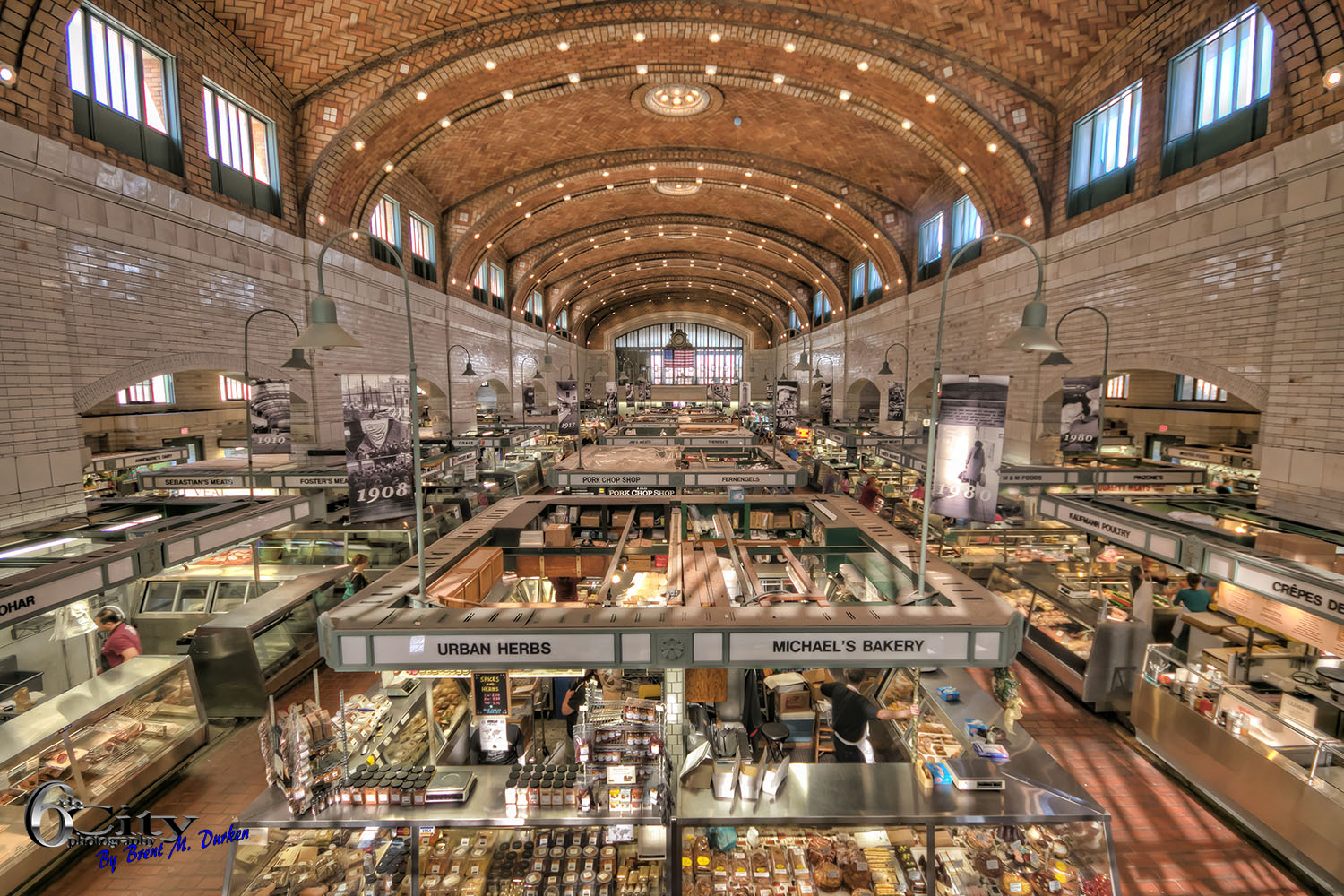 The West Side Market is Cleveland’s oldest public market and is home to over 100 vendors. These vendors offer fresh seafood, fruits, vegetables, meats, baked goods and more. It is located at the corner of West 25th Street and Lorain Avenue in the Ohio City neighborhood.
The West Side Market is Cleveland’s oldest public market and is home to over 100 vendors. These vendors offer fresh seafood, fruits, vegetables, meats, baked goods and more. It is located at the corner of West 25th Street and Lorain Avenue in the Ohio City neighborhood.
From Wikipedia:
“Most residents of the neighborhood, and many Clevelanders in general, still do a large portion of their shopping at the Market. The market is open to customers Mondays and Wednesdays from 7:00 a.m. to 4:00 p.m., and Fridays and Saturdays from 7:00 a.m to 6:00 p.m.
The market attracts tourists from all parts of the United States, who tour the market and learn about its history. Guided tours are offered. Its national profile has been boosted in recent years by coverage on various programs produced by the Travel Channel and Food Network.
Many stalls have remained under individual family control for much of the life of the Market, in a few cases dating back to its 1912 opening. The market’s tenants and sellers reflect the cultural diversity of the surrounding neighborhood and Cleveland as a whole. The current roster of tenants includes those of Irish, German, Slovene, Italian, Greek, Polish, Russian, and Middle Eastern descents, among others.
In the September 2010 issue of Food Network Magazine, the West Side Market was named America’s “Best Food Lovers’ Market.” https://en.wikipedia.org/wiki/West_Side_Market
For more info on this awesome market visit: http://westsidemarket.org/
All photos are copyright of Brent Durken – www.brentdurken.com
To purchase a digital download of this photo for your website or blog please visit: https://www.smugmug.com/gallery/n-zRG6xB/
Purchase a print of this photo: Brent Durken Print Sales
Flats East Bank
The Flats East Bank Project is quickly becoming a hotspot along the river in Downtown Cleveland. Here is some more information about this project from the Flats East Bank website: Flats East Bank redevelopment is a partnership between The Wolstein Group and Fairmount Properties driving $750 million in waterfront redevelopment with an 18 story office tower, trendy hotel, state of the art fitness club, and a range of local restaurants. Fall 2015 marked the completion of Phase II with even more amenities to the growing riverfront district as it added 241 unit high-end residential, restaurants, entertainment venues, and extensive riverfront boardwalk. The late Bert L. Wolstein and his wife, Iris S. Wolstein, started Developers Diversified Realty, which grew into a successful national real estate development company. They later opened Heritage Development. Bert and Iris have long been generous to Cleveland – having donated more than $40 million to local hospitals, colleges and other institutions. Mr. Wolstein worked for more than 25 years to transform the rundown Flats East Bank into a first-class, vibrant, accessible riverfront. After he passed, Iris, along with her son Scott, executive chairman at Developers Diversified Realty, as partners in The Wolstein Group, continued to pursue Bert’s vision. In 2005, after they rigorously worked with multiple parties to assemble land and financing, Iris and Scott unveiled their ambitious plans for this landmark development and even after the project was precipitously slowed by the Great Recession, Iris remained determined to see the development occur. The future of The Flats East Bank is looking very bright. “This isn’t just another entertainment district – it’s a catalytic neighborhood that’s going to place this city on the map as an urban waterfront destination,” Scott Wolstein said of the revitalization of the area. “The redevelopment of the Flats East Bank was my father’s dream but he never got to see it materialize. We knew the potential was vast, but now to see the blood, sweat and tears of the last few decades come to fruition is very gratifying,” said Scott. Driving more people to live, work and play, downtown, will only benefit the city. “I want Greater Clevelanders to be excited about this project and what it means for the future of Cleveland.”
For more information on the Flats East Bank please visit: http://www.flatseastbank.com/
All photos are copyright of Brent Durken – www.brentdurken.com
To purchase a digital download of this photo for your website or blog please visit: https://www.smugmug.com/gallery/n-zRG6xB/
Purchase a print of this photo: Brent Durken Print Sales
The Cleveland Skyline
Today’s photo is of the Cleveland Skyline in the late afternoon. It was taken from the Columbus Rd. lift bridge which provides one of the best views of downtown Cleveland. Here is some more info about the Columbus rd Bridge from the Cleveland Historical website. “By the 1830s, Ohio City – a separate city until it was annexed by Cleveland in the 1850s – was falling behind its more prosperous neighbor on the east bank of the Cuyahoga. When a Cleveland land developer constructed a bridge on Columbus Street in the Flats, Ohio City residents were outraged. The new bridge took a southerly route that bypassed Ohio City’s main commercial district on what is now West 25th Street. Given that this new bridge was far superior to the floating bridge further north that had previously been the only span connecting the two cities, Ohio City rightfully feared a drastic decline in traffic and goods moving through their city. Incensed, they decided to boycott the bridge. Cleveland retaliated by removing their half of the old floating bridge.
On October 31, 1836, an angry mob of Ohio City residents marched to the Columbus Street Bridge intending to destroy it. Cleveland’s mayor and a number of Cleveland residents met them and fighting broke out, leaving three men seriously injured before the County Sheriff put a stop to the violence. The courts eventually resolved the issue, allowing for both bridges to be opened to traffic.
The old Columbus Street bridge was replaced by an iron bridge in 1870. After that, a double swing bridge – then the world’s first – took that bridge’s place. Finally, in 1940, WPA workers installed a steel lift bridge on Columbus Road which still stands. Currently, however, there are plans to replace this bridge as well.”
More info here: http://clevelandhistorical.org/items/show/74#.UzlZePldWuI
Purchase this photo: Brent Durken Print Sales
http://brent-durken.pixels.com/
Cuyahoga County Courthouse
The Cuyahoga County Courthouse stretches along Lakeside Boulevard at the north end of the Cleveland Mall in downtown Cleveland, Ohio. The building was listed on the National Register along with the mall district in 1975.
From Wikipedia”
“The building was constructed from 1906–1912 by the architectural firm of Lehman & Schmitt. The building is Beaux Arts style and is constructed of Milford pink granite from Massachusetts. The rusticated masonry of the ground floor includes deeply recessed and arched windows and doors. A protruding keystone tops each one. The front entrance is flanked by bronze statues of Thomas Jefferson and Alexander Hamilton sculpted by Karl Bitter. Directly above the front entry doors are three large arched windows between fluted columns of the Ionic order allowing daylight into the courtroom within. The frieze of the cornice includes the inscription “Cuyahoga County Courthouse”. Above the cornice are several stone statues of historical law givers. Two of these figures, of Edward I and John Hampden, were sculpted by Daniel Chester French. The rear elevation facing Lake Erie is composed similarly, but with the inscription “Liberty is Obedience to Law”. A pediment with a plain tympanum surmounts the central element of the facade on both the north and south elevations”.
“If a nation expects to be ignorant and free in a state of civilization, it expects what never was and never will be… if we are to guard against ignorance and remain free, it is the responsibility of every American to be informed.” – Thomas Jefferson
